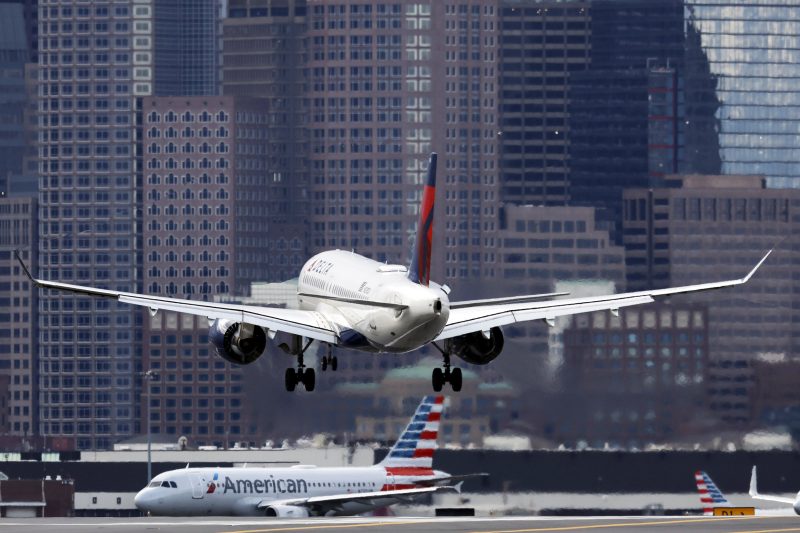
Crew concerns, air traffic strains could be behind near-miss flight incidents at airports
As reports of near-miss incidents at U.S. airports pile up early into 2023, the Federal Aviation Administration is set to hold a summit next week to assess safety risks for travelers.
FAA Acting Administrator Billy Nolen called the March 15 meeting last month, writing in a memo that “we are experiencing the safest period in aviation history, but we cannot take this for granted.”
Faced with recent events, Nolen wrote, “Now is the time to stare into the data and ask hard questions.”
Experts say near-misses on runways are more common than the traveling public may realize. There have been 613 runway incursion incidents so far this year, according to FAA data, compared with 1,732 in all of 2022.
While each incident is different, experts say there are likely some common underlying factors.
Global air traffic has been picking up rapidly following the Covid-19 pandemic, and while it has not yet returned to pre-pandemic levels, North American activity increased 130.2% year-on-year in 2022, according to the International Air Transport Association, an industry group.
Many of the increased flights are being staffed and guided by less experienced crews. Early in the pandemic, carriers slashed staff and many long-tenured aviation workers retired, leaving carriers scrambling to hire and train thousands of employees as travel demand rebounded.
That push has largely succeeded. Nearly 522,000 people were working in the air transportation industry as of last January, federal data show, up from almost 477,000 in January 2022. But some airlines — including Southwest, which suffered a system-wide meltdown during the winter holidays — have tweaked their training requirements in an effort to get more workers onto runways and into the skies to meet demand.
“We’re seeing pressures on the system,” said Hassan Shahidi, president and CEO of the nonprofit Flight Safety Foundation, “with experience levels not the same as they were before the pandemic, because of the loss of expertise.”
A Southwest spokesperson said that the carrier hasn’t lowered its standards for onboarding pilots and that current and future first-officer candidates must pass all elements of its flight operations training program before being allowed to fly. IATA didn’t respond to a request for comment.
Among the most high-profile near-miss incidents this year:
On Jan. 13, a Delta Airlines plane had to abort its takeoff from JFK International Airport in New York City after an American Airlines plane crossed in front of it. The National Transportation Safety Board has issued subpoenas for the pilots of the American Airlines plane.On Jan. 23, a United Airlines 777 jet improperly crossed a runway at Daniel K. Inouye International Airport in Honolulu, Hawaii, as a smaller, single-engine cargo plane operated by Kamaka Air was landing. On Feb. 4, a FedEx-operated Boeing 767 cargo plane and a Southwest Airlines 737 nearly collided at Austin-Bergstrom International Airport in Texas.On Feb. 16, an Air Canada flight was cleared for takeoff in Sarasota, Florida, on the same runway where an American Airlines 737 was cleared to land.On Feb. 27, a JetBlue plane landing at Boston’s Logan International Airport had to take “evasive action” to avoid hitting a Learjet charter plane that had failed to follow a command from air traffic controllers.
March also marks the 46th anniversary of the deadliest accident in aviation history, when 583 people were killed at the main airport in Tenerife, Spain, in 1977 after two planes collided on the runway.
The accident prompted a series of changes that remain common practice today, like the use of standardized English phrases over communication channels and the implementation of crew resource management — a set of policies that give other crew members in the cockpit license to contradict a pilot’s orders if they believe they are unsafe.
“That was a really huge thing that helped change safety — that all crew members can feel like they can speak up…without the threat of losing their job or being reprimanded, or even take over control if necessary,” said Kathleen Bangs, an aerospace expert and former commercial pilot. “This was big step forward from the breed of pilots who had been trained in the military or during wartime.”
Bangs noted that there has not been a major commercial airline disaster in the U.S. since 2009, when Colgan Air Flight 3407 went down en route to Buffalo, N.Y., killing all 49 passengers and crew aboard.
Airlines’ strong safety record since then may be leading air crews, especially staffers who haven’t worked in the industry during a major incident, to be less careful, Bangs said.
“Safety does not breed vigilance,” she said. “Unfortunately, the flip side is complacency. That’s what we’re seeing — pilots cutting short, controllers cutting short, people not paying attention.”
